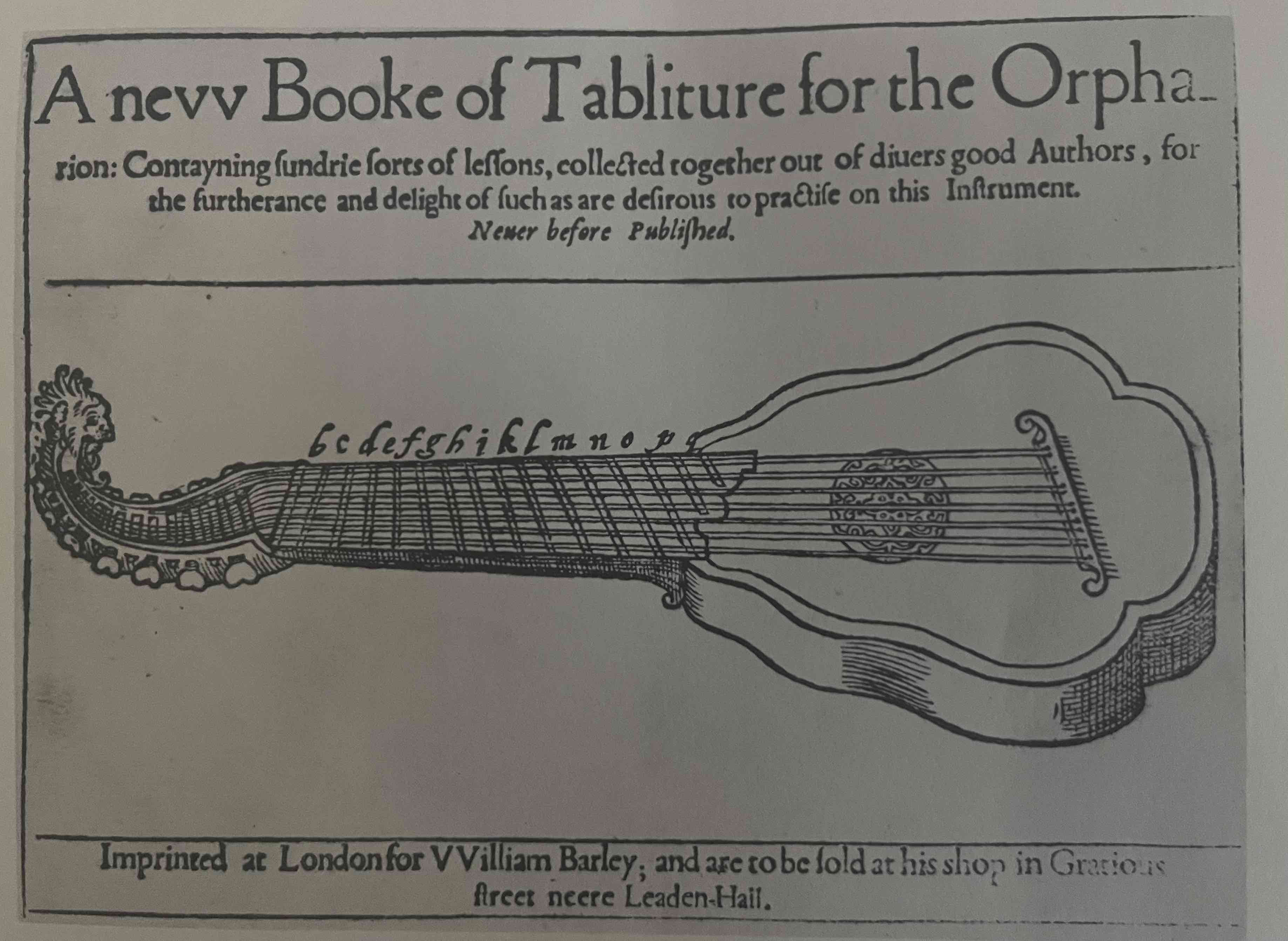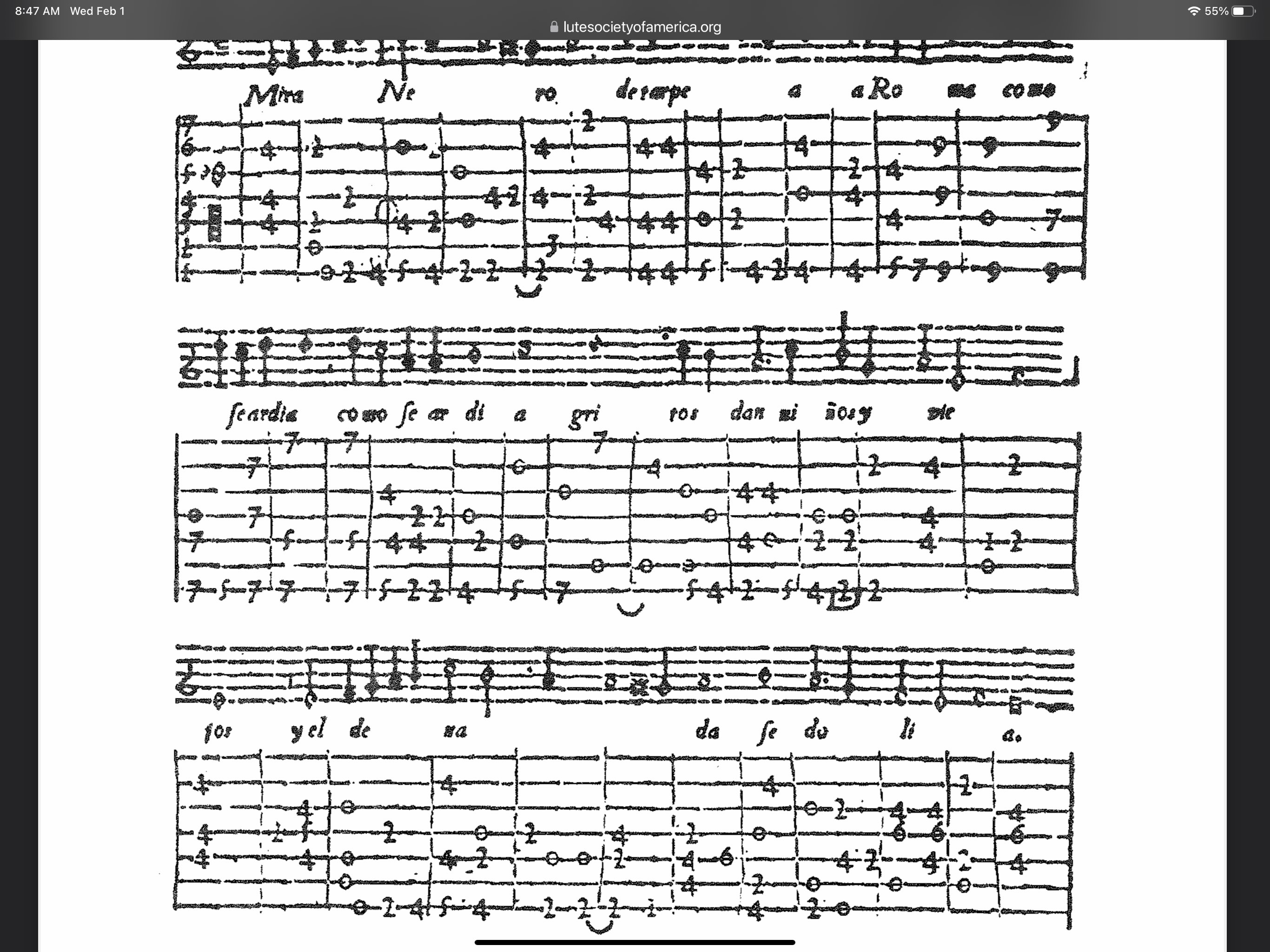|
estebanana -> RE: Building a reconstruction of a Renaissance Vihuela (Sep. 5 2025 13:40:34)
|
quote:
ORIGINAL: Ricardo
Sorry for the bump on this but I am a slow researcher and maybe this came up earlier, but I found this interesting book in my dad's library. It is a 1960's print of a facsimile and discussion/anaylisis of this guy William Barley's 1596 treatise (England) with music for Lute, Orpharian, and Bandora. The Orpharian (obviously references to Orpheus like other humanist musicians of the time like Milan/Fuenllana etc.), was tuned like Lute but with 7th course to low F, and it had 15 frets. He says it used wire instead of gut strings and should be plucked softer, and not "strummed" or struck like the Lute (implying that gut string instruments of the time could use strumming). The other instrument is Bandora looks the same (flat back weird body shape with 15 frets), but tuned like a guitar (internally) but with that low E up to G. So my point with this is that we see the exact same thing in England as in Spain, where you have music published for the 7 string "lute" or vihuela type instrument, and then a guitar type thing too. Probably you guys all knew about this already (again, dead horse but odd Vega insisted no evidence of 7 course vihuela MUSIC.).
Anyway the modern author points out some issues with pitch and tuning/mode discrepancies again just like the Narvaez thing we discussed and suggested the capo Tasto, admitting no such word in English was being used, but implying it "could have" existed to realized the correct vocal pitch relations implied by the tablature and mensural notations together. He did say it would not work for the 7 course instruments though. The bandora they could concord music with was tuned low in other sources (how I am seeing the guitar-vihuela relation in spain as well). All the music is English madrigal stuff in this.

Yeah there’s a whole wire strung set of instruments called Citterns and Orpharion or different sizes. And the contemporary Portuguese Guitar used in Fado music is a descendant of those 16 to 18th century Citterns. The cittern stuff is quite popular with an eccentric set of early music fans and there are Cittern Foros and consorts ect today.
Vega was a machinist who built a few guitars and read a lot, but he wasn’t a musicologist or an organologist by and stretch. ( an organologist is person who studies the history of instruments in a scholarly way) I think he has a lot of knowledge in the field of modern classical guitar and all that from the mud twentieth century forward, but I wasn’t up on early music research in the field of string making and research into the vihuela.
There’s a whole bunch of people who think searching for the vihuela is like SETI and that we’re not going to find and material evidence that extra terrestrial renaissance vihuelas existed and visited earth. It’s ok let sleeping dogs lay. The vihuela aficionados are like the TV show X-Files, we want to believe.
Images are resized automatically to a maximum width of 800px
|
|
|
|


